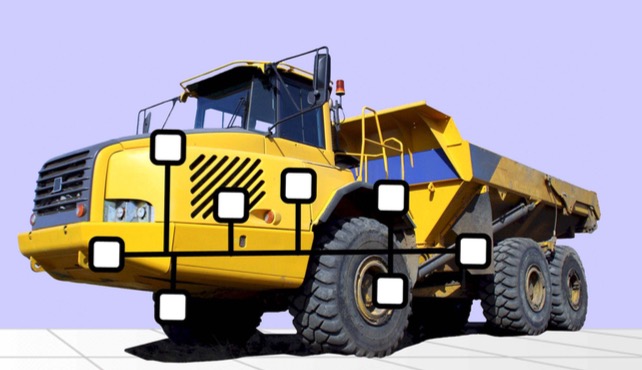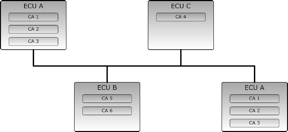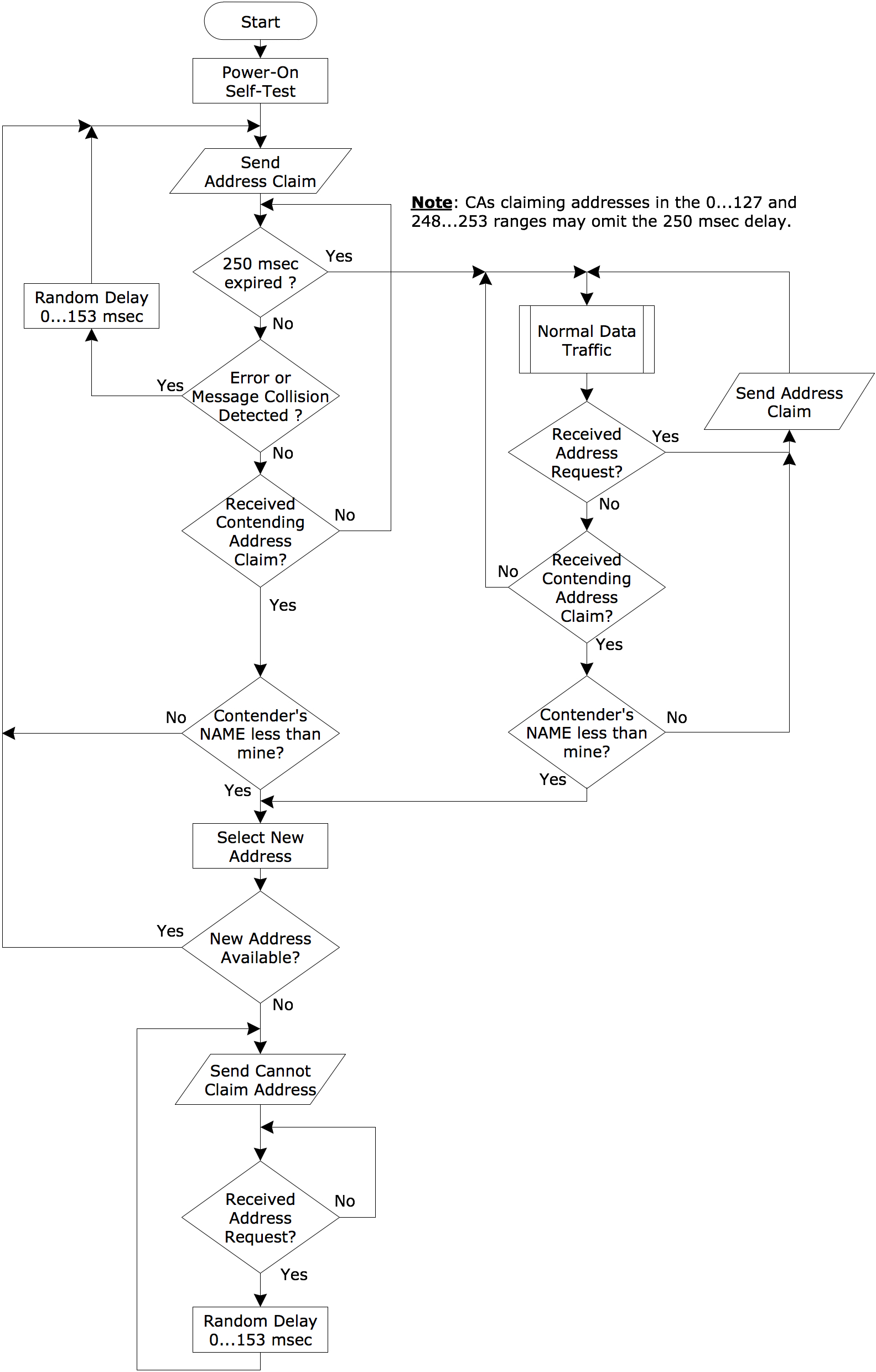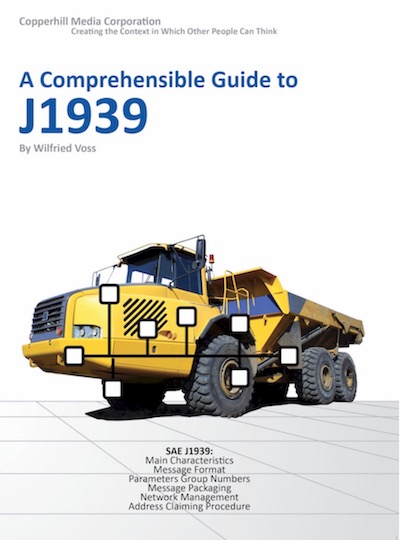Recent Posts
SAE J1939 Address Claim Procedure - SAE J1939/81 Network Management
Posted by on
 Network Management under J1939 is
primarily represented by the Address Claiming Process. While other
higher layer protocols based on Controller Area Network (CAN) do not support dynamic node address
assignments per default, the SAE J1939 standard provides this ingeniously
designed feature to uniquely identify ECUs and their primary function.
Network Management under J1939 is
primarily represented by the Address Claiming Process. While other
higher layer protocols based on Controller Area Network (CAN) do not support dynamic node address
assignments per default, the SAE J1939 standard provides this ingeniously
designed feature to uniquely identify ECUs and their primary function.
SAE J1939/81 prefers the use of CA (Controller Application) rather than ECU (Electronic Control Unit). In all consequence one ECU can run multiple CAs. Each Controller Application will have one address and associated NAME. The following chapters will continue using the term ECU, which is a synonym for CA.
Address Claiming Procedure Overview
Each ECU in a J1939 vehicle network must hold at least one NAME and one address for identification purposes. Single electronic units are allowed to control multiple names and addresses.
The 8-bit ECU address defines the source or destination for messages.
The ECU NAME includes an indication of the ECU’s main function performed at the ECU’s address. A function instance indicator is added in cases where multiple ECUs with the same main function share the same network.
The J1939 standard allows up to 253 ECUs with the same function to share the same network, where each ECU is identified by their individual address and NAME.
The CAN standard in itself does not support node (ECU) addresses, only message IDs, where one node may manage multiple messages. However, the message ID must be hard-coded in the application program. Also, in a standard CANopen network the node address is usually hard-wired or mechanically adjustable (e.g. per dip switch).
SAE J1939 defines a 64-bit NAME, as shown in the picture below, to uniquely identify each ECU in a network.

While the 64 bit NAME is certainly appropriate to uniquely identify nodes (ECUs) and their function in a J1939 network, it will nevertheless necessitate unreasonable resources to maintain standard communications.
In order to provide a more efficient solution, the SAE J1939 Standard defines an address claim procedure, where each ECU utilizes an 8 bit address to identify the source of a message or to access (destination address) another ECU in the network. The address claim procedure is designed to assign addresses to ECUs right after the network has been initialized and thus assuring that the assigned address is unique to the ECU. For instance, an engine may be assigned the address 0 while another engine is present, which will be assigned another address (e.g. 1) and instance.
In addition, the SAE J1939 Standard defines Preferred Addresses to commonly used devices in order to minimize the rate of multiple devices demanding the same address and consequently optimizing the address claim process. ECUs will generally use their assigned Preferred Address immediately after the power up process, but in order to prevent any address claim conflicts, each ECU must first announce which addresses it intends to claim.
The address claim feature considers two possible scenarios:
- Sending an Address Claimed message
This first scenario addresses a standard J1939 network startup. Upon powering up (or when requested), an ECU will send an Address Claimed message into the CAN bus in order to claim an address. All ECUs receiving the address claim will record and verify the newly claimed address with their internal address table. In case of an address conflict, i.e. should two or more ECUs claim the same address, the ECU with the lowest NAME value will succeed and use the address as claimed. The remaining ECUs must claim a different address or stop transmitting to the network.
- Request for Address Claimed message
Requesting an Address Claimed message from all nodes in the network and, as a result, determining addresses claimed by other ECUs, is the necessary procedure for ECUs powering up late for various reasons, but especially transitional ECUs. Such transitional ECUs may be diagnostics tools, service tools, and trailers, etc. This approach allows the ECU to determine and claim an available address or to find out which ECUs are currently on the network.
Addresses
The J1939 protocol utilizes an 8 bit device (ECU) address, which, theoretically, would allow the operation of 256 nodes in the same network. It can only be assumed that the SAE was trying to keep the bus traffic on a low level by restricting the maximum number of nodes to 30.
In all consequence, the ECU address is really a Controller Application address in a situation where each ECU may accommodate several Controller Applications. The 253 addresses (Address 254 is reserved for Network Management, Address 255 is used for global addressing) are assigned (claimed) for the Controller Applications, not the actual ECU.
The following picture shows an example, where, for instance, ECU A accommodates three controller applications.

The picture also demonstrates that ECUs of the same function (ECU A) can co-exist in a J1939 network without address collision. J1939 features a very ingenious feature, the Address Claim procedure which automatically assigns addresses to each Controller Application. In case of an Address Claim conflict, the Controller Applications are able to claim another free address.
NULL Address
The address 254, the so-called NULL Address, is reserved for network management, and it is used for the Cannot Claim Source Address message.
Global Address
The Global Address (255) is exclusively used as a destination address in order to support message broadcasting (sending a message to all network nodes).
Address Claim Procedure
The address claim feature considers two possible scenarios:
- Sending an Address Claimed message
This first scenario addresses a standard J1939 network startup. Upon powering up (or when requested), an ECU will send an Address Claimed message into the CAN bus in order to claim an address. All ECUs receiving the address claim will record and verify the newly claimed address with their internal address table. In case of an address conflict, i.e. should two or more ECUs claim the same address, the ECU with the lowest NAME value will succeed and use the address as claimed. The remaining ECUs must claim a different address or stop transmitting to the network.
- Request for Address Claimed message
Requesting an Address Claimed message from all nodes in the network and, as a result, determining addresses claimed by other ECUs, is the necessary procedure for ECUs powering up late for various reasons, but especially transitional ECUs. Such transitional ECUs may be diagnostics tools, service tools, and trailers, etc. This approach allows the ECU to determine and claim an available address or to find out which ECUs are currently on the network.
After completing their Power On Self Test (POST) ECUs (Controller Applications) claiming addresses in the 0 to 127 or 248 – 253 range may initiate their regular network activities immediately, while other ECUs should not begin until a time of 250 ms after claiming an address. This allows competing claims to be resolved before the address is being used.
In the event that two ECUs attempt to claim the same address, the ECU with the lowest NAME value will succeed and use the address as claimed. The remaining ECUs must claim a different address by sending another Address Claimed message containing a different address or send a Cannot Claim Address message.
The destination address for an address claim is always the global address (255) in order to address all nodes in the network.
A node, that has not yet claimed an address, must use the NULL address (254) as the source address when sending a Request for Address Claimed message.
The following flowchart demonstrates the address claim procedure in detail:

A Comprehensible Guide to J1939
SAE J1939 has become the accepted industry standard and the vehicle network technology of choice for off-highway machines in applications such as construction, material handling, and forestry machines. J1939 is a higher-layer protocol based on Controller Area Network (CAN). It provides serial data communications between microprocessor systems (also called Electronic Control Units - ECU) in any kind of heavy duty vehicles. The messages exchanged between these units can be data such as vehicle road speed, torque control message from the transmission to the engine, oil temperature, and many more.
The information in this book is based on two documents of the SAE J1939 Standards Collection: J1939/21 - Data Link Layer J1939/81 - Network Management A Comprehensible Guide to J1939 is the first work on J1939 besides the SAE J1939 standards collection. It provides profound information on the J1939 message format and network management combined with a high level of readability.
=> Read More...
 Loading... Please wait...
Loading... Please wait...

